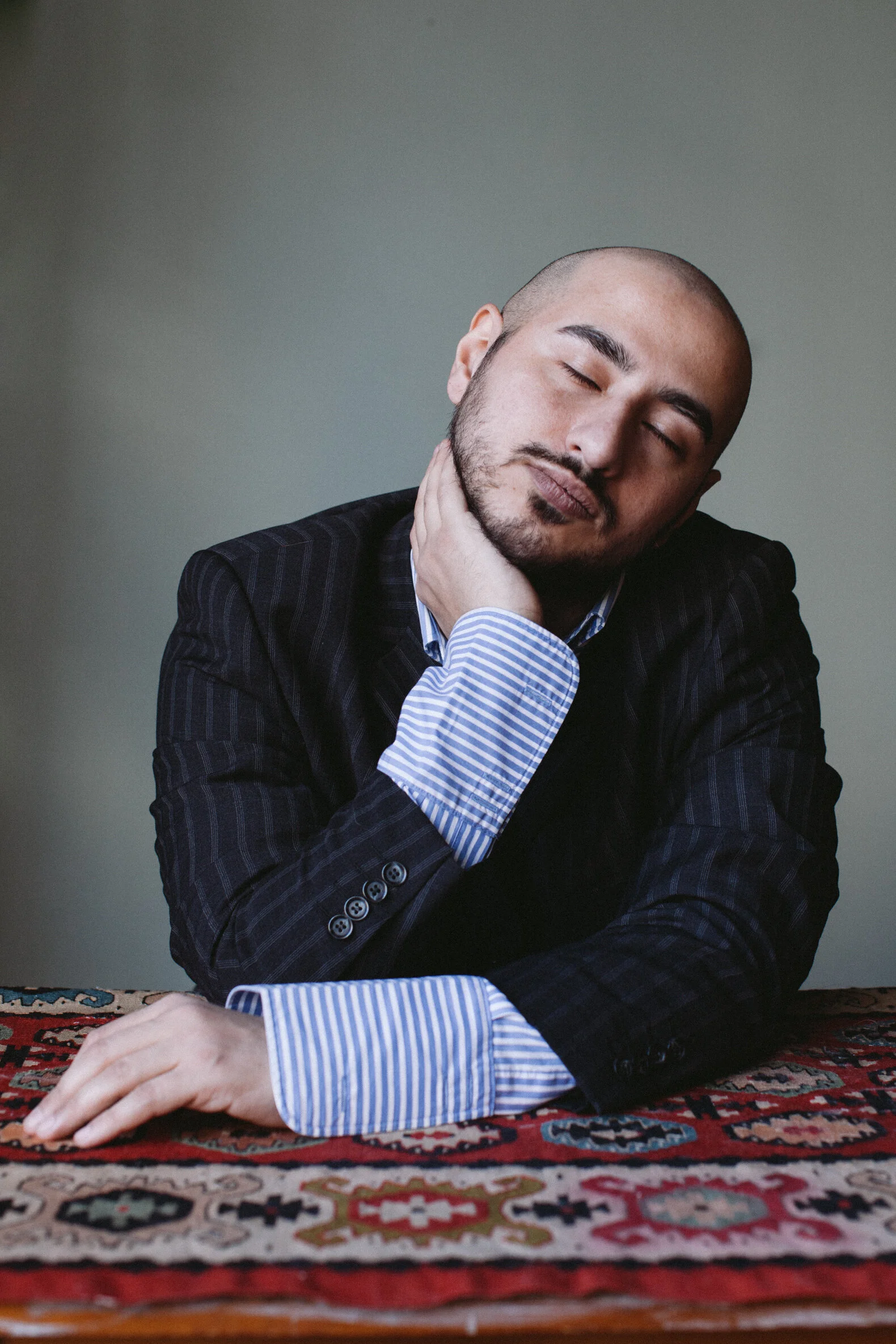Seeing imagination as an antonym to obedience, respect, and discipline, my first teacher at school, Mrs. Flora, said that we would have to obey rules to succeed in the world. She insisted that wishing and hoping to find our voices would lead us to nothing. These words often led me to blame myself for dropping out of a computer engineering course at the university to pursue my passion for the arts. But the blame was no match for my hope of having an artist’s studio and exhibiting in white cube galleries, a dream bolstered by the thought of having Tural come to each exhibition opening. In 2011, I entered the local art scene, which meant making neo-expressionist paintings on our home balcony, going to exhibitions, and speaking to local artists, or at least trying to. Julian Schnabel’s 1996 feature film Basquiat depicted how I thought I was going to make it in the art world. The film suggests that to become an artist, one has to hang out with the right people, exhibit, network, exhibit more, and be picked by a cool curator. As a teenager, I believed in this beautiful fantasy as if it were a message from God. I started making friends from the local art scene, and the concepts of body, society, and imagination started changing for me. The more I painted, the more I believed in myself. I believed that I am real, part of this society, and that I am making my contribution by telling my story. Nevertheless, during the next six years of working as a young artist in Azerbaijan, I came across many different faces that slowly made me recall an important lesson I learned—these people are the products of this society. It was my mistake to equate the art community with a cool notion that I have seen in American movies.
I remembered Mrs. Flora’s words again when I left my hometown to go to the UK to study the fine arts. It wasn’t easy at the start. As with most international students, I had major culture shock and bouts of homesickness. But I’d worked hard to come to the UK and felt I couldn’t complain; Tural would visit me often in those moments. However, in my second year abroad his presence began to decrease when I met my housemate Emily Simpson, who was studying for her Master of Fine Arts degree. That’s when the concept of friendship started to change for me. I found that safe space I created in my head throughout childhood—but in the world around me. As small parts of hope started lighting up, I became more rational. A physically real person who wasn’t part of my imagination—Emily—became my closest friend, melting my heart by making me feel real. I didn’t have to close my eyes anymore to escape my existence. Emily gave me the strength to accept myself, explore true friendship, set boundaries with unpleasant experiences, and to understand and enjoy the comforts of life. Emily was a hope I had been wanting for a very long time. My other friends, including Tural, Yves, and Rashida, taught me to appreciate my body and they brought me to good places, and I still take pride in their beautifully pink appearances in my life. What I learned about my society and culture still affects how I perceive myself and my body, but a culture of pink for girls and blue for boys no longer entraps me. Googoosh’s “Ayrılıq” (meaning “separation” in English), plays like an anthem in my head: “what can I do that I can’t reach you anymore, so here we separate… I am from here but I don’t belong to you.”
Learning about my society’s obsessive views on heteronormative gender and sexuality, it has become easier to heal my social anxieties and shyness, avoid sadness and loneliness, not settle for less, and even reject suicidal thoughts. I used to believe that my relationship with gender and sexuality didn’t define me and it shouldn’t define me. But after understanding my queer body, the most important part of loving my gender and sexuality has been my journey to self-care. As the imagination played a principal role in helping me to love my body and my queerness with its all glitter, pink alter megos, imaginary friends, strengths and flaws, I am not looking for society to accept me, and I am not easily intimidated anymore. My queer body is still unwanted in my society. It has seen and experienced a lot, mentally and physically. This makes me a valuable contributor to society, standing up for what is right. Today, through my practice as an artist, I carry and examine those pink characters and I have hope. But I don’t think of hope as being imaginary support, optimistic quotes, smiling faces, positive thinking, or being aspirational. Today, my hope is power. The power that enables me to think and act, to move forward while taking care to stand up for myself. My hope is a protest. It is fighting for my body, my rights, and my responsibilities. My hope is a state of well-being. Maintaining my mental health and taking care of my body, educating and inspiring other marginalized voices next to me. I know that I have come far, and I have the strength to fight for my body and my hope.






